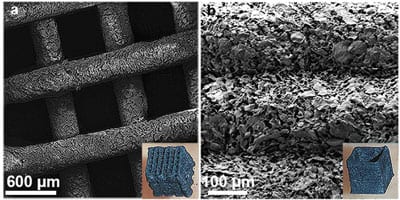MXenes are a promising class of 2D materials with unique intrinsic physical and chemical properties, including excellent conductivity, hydrophilicity and high density when compared to graphene.
Formulating 3D-printable MXene inks and integrating them into customized 3D device architectures would provide a high degree of architectural control, scalability, and cost-effectiveness. However, this would require that inks with single to few layer MXene can achieve the rheological properties required for 3D printing.
3D-printed architectures composed of MXenes are particularly attractive for energy storage applications such as rechargeable lithium- and sodium-ion batteries, lithium-sulfur batteries and supercapacitors. They could also be used in other applications such as energy conversion, photocatalytic fuel production or electromagnetic shielding. Researchers at the University of Manchester have demonstrated for the first time the possibility to print three-dimensional freestanding MXene objects. They developed 3D-printing inks that are composed solely of large few-layer MXene flakes […]
Case Study: How PepsiCo achieved 96% cost savings on tooling with 3D Printing Technology
Above: PepsiCo food, snack, and beverage product line-up/Source: PepsiCo PepsiCo turned to tooling with 3D printing...






























0 Comments